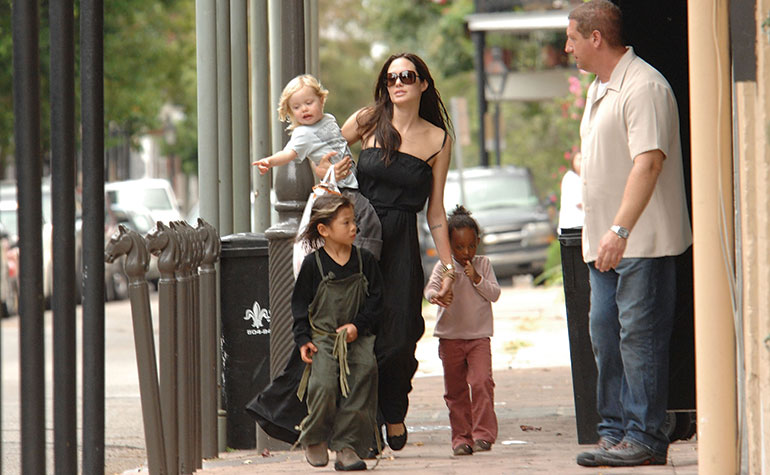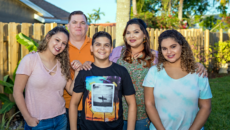Now that you’re home with your child, and wrapped up in the day-to-day joy of parenting, you probably find it hard to believe that you were ever skeptical or fearful of adoption. But cast your mind back and try to recapture all the emotions you felt when you first considered this route to parenthood. You may have felt vulnerable after struggling through years of infertility, and so used to bad news that you doubted an adoption would happen. You probably wondered about the timeline–because you were so ready to be a mom–and worried about the cost. Perhaps you began your research online and felt overwhelmed by all the options–how could you be sure you were choosing a stable adoption program and a trustworthy agency or attorney?
For many of us, getting the chance to ask all of those nagging questions was the key that helped us take that next step. If you haven’t yet been approached by a neighbor, a colleague, or a friend of a friend, get ready. Before that first conversation, it’s wise to prepare yourself with answers about adoption in general. This way, you can avoid giving away personal information that your child might some day prefer to keep private. (Many readers admit they shared too much when their children were little.)
Once we get the hang of it, most of us relish these opportunities to be adoption educators and advocates–and never get tired of attesting to the sweet light at the end of the tunnel.
Their Questions, Our Answers
Here, we offer tried-and-tested short answers to the most common questions about adoption, plus statistics and background information, if you want to go further.
Q: Was adoption terribly expensive? How did you afford it?
A: The average cost of an adoption last year was $27,000. Grants and reimbursements can reduce the expense.
Each year, Adoptive Families conducts a survey of adoption costs and timelines; according to our data, the average cost of adoption roughly equals the cost of a midsize car. The adoption tax credit (up to $12,150 for adoptions completed in 2009) and employee benefits can reduce out-of-pocket cost significantly, bringing adoption well within the reach of most Americans.
Although every adoption has unique factors that affect cost, as a general rule, adopting from foster care is the least expensive route. In the 2007-2008 AF survey, 85 percent of foster adopters reported total costs of $5,000 or less. International adoptions are more expensive, but generally predictable, once you’ve chosen the country of origin. Private, infant adoption costs range widely, depending on your state’s laws and the birth mother’s situation.
Q: How long does it take? Didn’t you wait forever?
A: The average wait to adopt is about two years.
According to AF‘s surveys, most adoptive parents bring their children home within two years of submitting their paperwork. The numbers are always in flux; in recent years, several sending countries have slowed their process. Meanwhile, domestic adoption has sped up. In our most recent poll, more than half (55 percent) of the respondents report being matched with a birth mother in less than six months; for one-third of the families, the baby was born less than one month after the match.
Q: Is it really possible to adopt an American child? Even a newborn?
A: The vast majority of adoptees are U.S.-born. International adoptees just tend to be more visible.
In any given year in the U.S., about 100,000 children join their families through adoption (not counting adoptions by stepparents). About one-quarter are placed at birth by their mothers. About half are adopted from U.S. foster care, often by their foster parents. These children range in age from infants through teenagers. About one-quarter are adopted from other countries. Media attention tends to focus on international adoption, but for the past 30 years, more than three-quarters of adoptions are of U.S.-born children.
Q: Doesn’t open adoption confuse your child?
A: Research on kids in open adoption shows that there’s no such effect.
The Minnesota-Texas Adoption Research Project (MTARP) studied several hundred families in open adoptions. The children (who were between 12 and 20 years old for the last wave of questions) did just fine on tests of self-esteem and social adjustment. It’s hardly surprising: Only 58 percent of all children under 18 in the U.S. live in a “traditional household” with two parents. Children who’ve been exposed to blended, single-parent, extended, and gay families in their own lives, and in the media, can easily grasp the idea of having birth relatives.
Q: Aren’t you afraid the birth parents will come and take him back?
A: Ever since the adoption was finalized in court, he’s as much ours as if we’d given birth.
In private, infant adoptions, about one-third of expectant mothers change their plans between matching and placement. A smaller–but still significant–number change their minds between placement and the termination of their rights. Finalized adoptions are very rarely contested: fewer than 0.1 percent end up in court. In adoption from foster care, and in international adoptions, birth parents’ rights are terminated before the adoption proceedings can begin.
Q: I bet her birth mother was a teenager, right?
A: We’re keeping information about our child’s birth mother private, but most birth mothers are in their twenties.
The majority of birth mothers relinquishing children are older than 18 (one study puts the average age at 24). Most are single (though about five percent of babies are relinquished by married couples). About a quarter have children already. Interestingly, women who place their children for adoption are more likely to have intact families, higher incomes, and higher educational levels than mothers who choose to parent their babies. The average age of relinquishing birth fathers is 27; about one-quarter of them take an active role in the adoption plans.
Q: Are you going to tell him that he was adopted?
A: Yes, it’s something we already talk about.
Fifty years ago, adoptive parents often pretended that their children had been born to them. (Some adoptive mothers even wore padded maternity clothes for months before the baby came.) Nowadays, the growth in open adoption and transracial adoption (let’s face it, it’s hard to pretend that two Caucasian parents gave birth to a Chinese baby) means that it’s almost impossible to keep an adoption secret. Our families talk openly about adoption with their children from the very beginning. For their part, few adoptees can remember having been told they were adopted–it’s just something they grew up knowing.
Q: Aren’t most adoptees troubled?
A: A research study that’s been going on for a decade shows that adopted children do just as well as kids raised in their biological families.
The Sibling Interaction and Behavior Study (SIBS), conducted at the University of Minnesota, which has followed children in 600 families since 1999, concludes that, by mid-adolescence, adoptees are no more likely than their peers to engage in delinquency, substance abuse, or aggression. Their relationships with their brothers and sisters (whether adopted or the biological children of the adoptive parents) were as close and loving as those between bio-siblings, and adoptees reported feeling as attached to their parents as did biological children.
However, the SIBS also finds that adoptees are “moderately” more likely than their non-adopted peers to display emotional or behavioral problems, like anxiety, depression, oppositional defiant disorder (ODD), or attention deficit hyperactivity disorder (ADHD). Children adopted domestically are at slightly higher risk than those adopted internationally; researchers do not know why.
Although the risk of adoptees having a disorder is only slightly elevated, the SIBS has found that they are more than twice as likely as non-adoptees to be referred to a mental-health professional. The researchers theorize that adoptive parents are better educated, or have greater economic resources, than non-adoptive parents, are more comfortable with social services because they’ve had previous interactions, or “may have a lower threshold than the parent of a non-adopted child for reporting behavior as problematic.” As a result, their children may be over-diagnosed. Overall, however, the SIBS researchers emphasize that “most adopted adolescents are psychologically healthy.”
Q: How do you know that your adoption was legal? Weren’t you afraid of being scammed?
A: The best way to avoid problems is to work with a large, nonprofit agency or with an attorney who specializes in adoption, and to do plenty of research before you sign up.
No one compiles reliable statistics on adoption scams, but our experience at Adoptive Families is that the greatest risk factor is attempting to go it alone. Adoption is a process that will transform at least two lives; it likely involves laws in more than one state, and maybe more than one country. There is no guarantee against problems, but risks can be reduced by working with an agency or attorney with a long history of doing adoptions, and by checking references thoroughly.
Q: I’d love to adopt–how do you get started?
A: What kind of child do you think will fit best in your family?
Adoptive parents who have had a positive experience will naturally think to recommend their own attorney or agency; however, this may not be the best choice for your questioner. Agencies and attorneys specialize in different kinds of adoption. Prospective adoptive parents should focus first on the child and the kind of adoption they want to pursue before picking their adoption professional.
Adapted from You Can Adopt: An Adoptive Families Guide (Ballantine).


